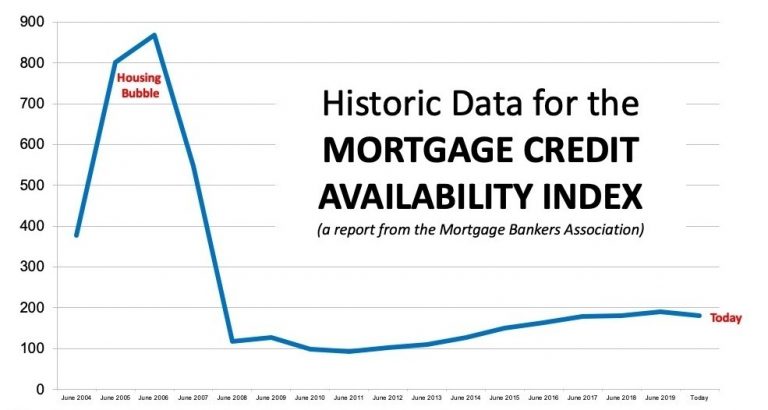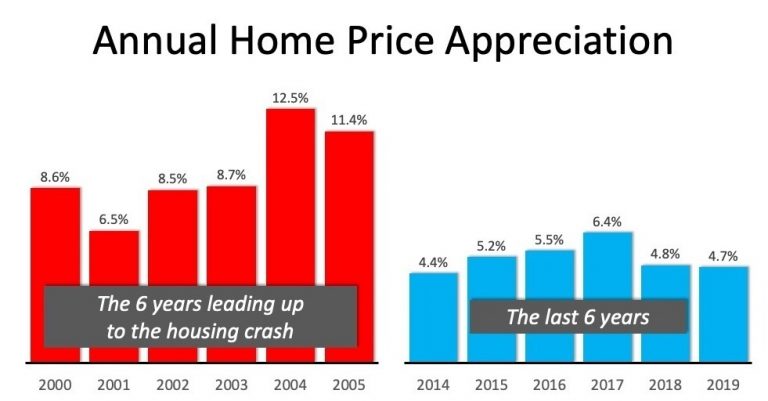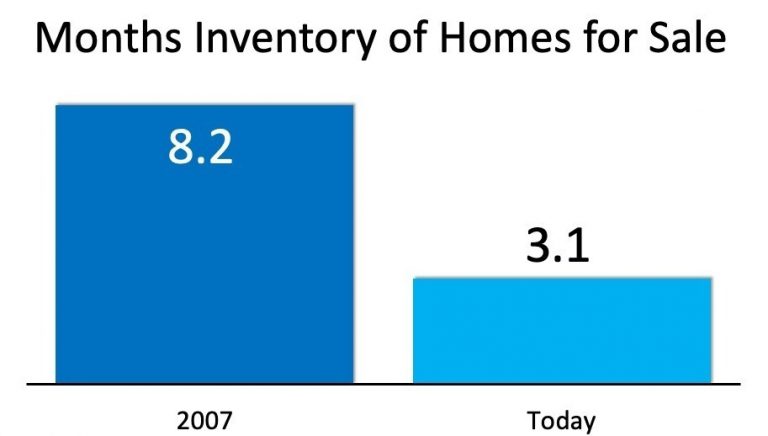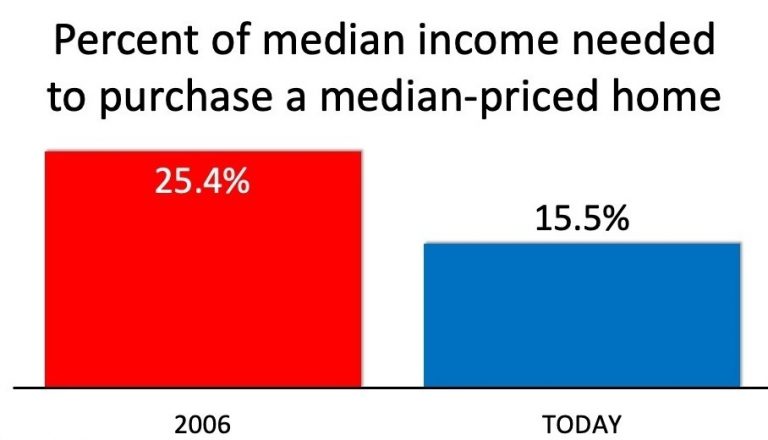With all of the volatility in the stock market and uncertainty about the Coronavirus (COVID-19), many people are concerned that we may be headed for another housing crash. The feeling is understandable.
The reality is this real estate market is nothing like the previous market that eventually led to the 2008 housing crash.
Here are five reasons why the current conditions of the market are different from 2008.
1. Mortgage standards are tougher.
During the 2008 housing market, it was too easy to get a mortgage. With today’s lending requirements, it is tougher to qualify for a mortgage.
The Mortgage Bankers’ Association releases a Mortgage Credit Availability Index which is “a summary measure which indicates the availability of mortgage credit at a point in time.” The higher the index, the easier it is to get a mortgage.
Below you will see that in the years preceding 2008 the index skyrocketed. Currently, the index shows how comparable how difficult it is to get a mortgage.
2. Home Prices are Not Appreciating as Rapidly.
Below is a graph showing annual house appreciation over the past six years, compared to the six years leading up to the 2008 market. Though price appreciation has been quite strong recently, it is nowhere near the rise in prices that were experienced in 2008.
There’s a stark difference between these two periods of time. Normal appreciation is 3.6%, so while current appreciation is higher than the historic norm, it’s certainly not accelerating beyond control as it did in the early 2000s.
3. Home Inventory is Low
The months’ supply of inventory needed to sustain a normal real estate market is approximately six months. Anything more than that is an overabundance and will causes prices to depreciate. Anything less than that is a shortage and will lead to continued appreciation. As the next graph shows, there were too many homes for sale in 2007, and that caused prices to tumble. Today, there’s a shortage of inventory which is causing an acceleration in home values.
4. Affordability was Low.
The affordability formula has three components: the price of the home, the wages earned by the purchaser, and the mortgage rate available at the time. Fourteen years ago, prices were high, wages were low, and mortgage rates were over 6%. Today, prices are still high. Wages, however, have increased and the mortgage rate is about 3.5%. That means the average family pays less of their monthly income toward their mortgage payment than they did back then. Here’s a graph showing that difference:
5. Current Home Owners Have More Equity.
In the run-up to the 2008 market, homeowners were taking on more debt and leveraging their homes. Many withdrew their equity once it built up, and they learned their lesson in the process. Prices have risen nicely over the last few years, leading to over fifty percent of homes in the country having greater than 50% equity. But owners have not been tapping into it like the last time. Here is a table comparing the equity withdrawal over the last three years compared to 2005, 2006, and 2007. Homeowners have cashed out over $500 billion dollars less than before:
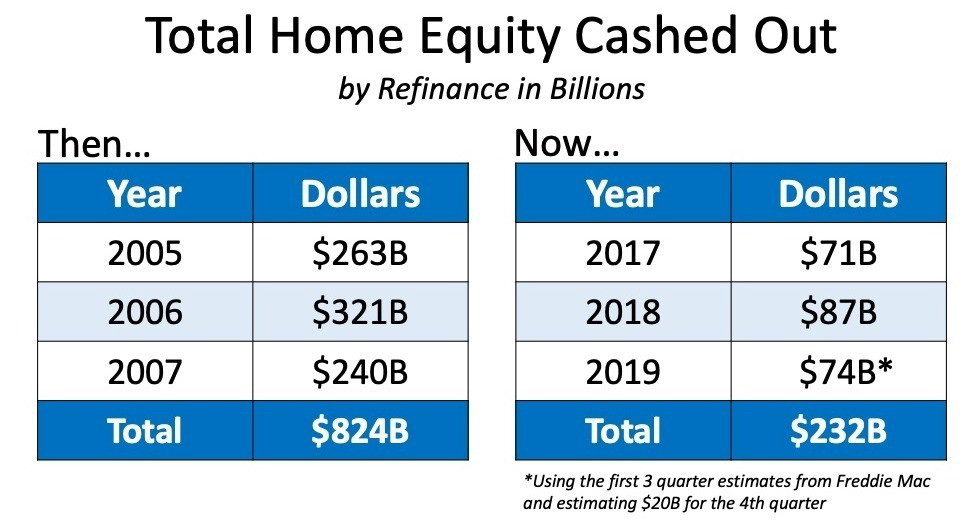
During the crash, home values began to fall, and sellers found themselves in a negative equity situation (where the amount of the mortgage they owned was greater than the value of their home). Some decided to walk away from their homes, and that led to a rash of distressed property listings (foreclosures and short sales), which sold at huge discounts, thus lowering the value of other homes in the area.
The Current State of the Market
The current market is holding up. Prices have softened from their highs and some buyers have paused their home search. At the same time many sellers have held up their sales and inventory has dropped by 30% since the shelter in place mandate has been placed. Of the current homes that are listed hardly, any have dropped their prices. Recently real estate has been named an essential service by the state and that will help facilitate the sale of more homes. As the shelter in place restriction is still in effect, I expect inventory to remain low and serious buyers who will continue to shop and make offers.

